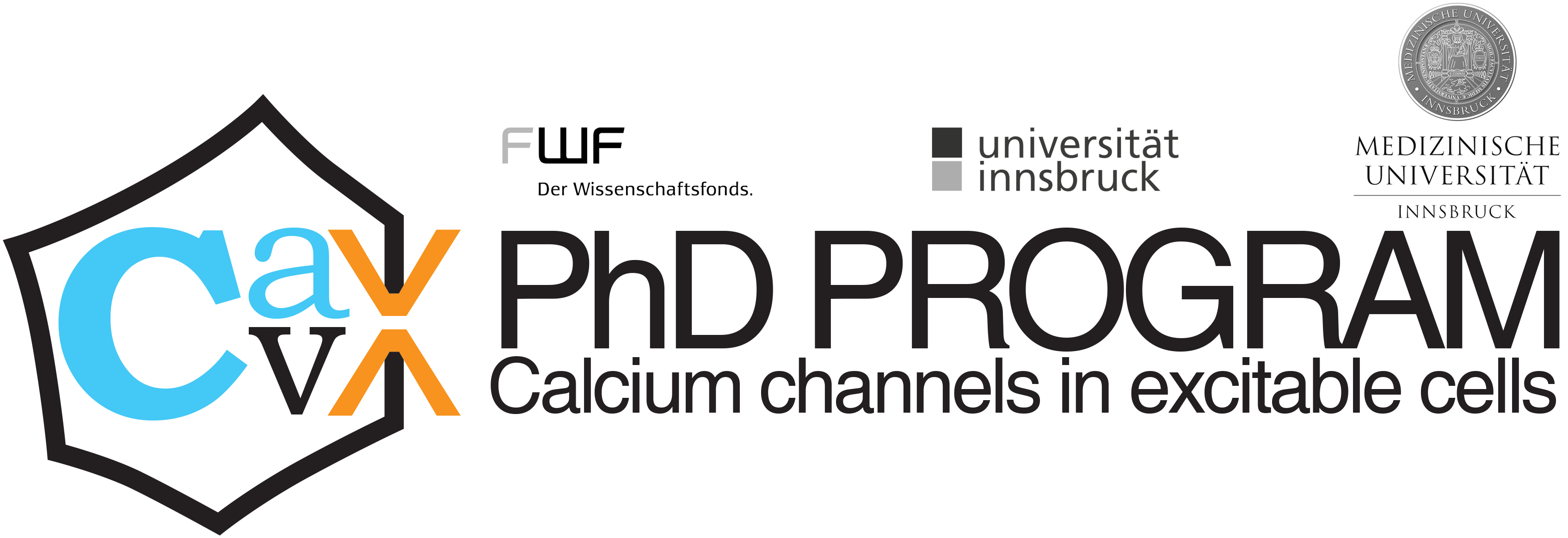// FERNÁNDEZ-QUINTERO GROUP
Keywords: Calcium channel structure; calcium channel dynamics; structure-function relationships; structural determinants of voltage gating; disease mutations
// AIM
Our scientific interest aims at elucidating the molecular mechanism of voltage-sensing and channel gating. We plan to advance our understanding of CaV channel structures and their dynamics and link them to channel function. CaV channels are particularly interesting, as the pore-forming α1 subunit is composed of four homologous but non-identical domains. Thus, we want to characterize the contribution of each domain to channel gating and understand the consequences of mutations in neurological diseases.
// APPROACH
In our lab we have implemented several methods that allow us to study CaV channel structure and dynamics. The field CaV channel structure prediction profited substantially from the available experimental structures, increasing the accuracy of the respective predictions. Additionally, we perform cutting-edge molecular dynamics simulations, considering the CaV channels in a membrane environment. We apply various enhanced-sampling techniques to overcome current timescale limitations that prohibit us to capture functionally relevant conformational rearrangements. Furthermore, we will test different state-of-the-art tools to analyze the respective simulations and to reconstruct thermodynamics and kinetics of conformational changes. By combining structure modelling with molecular dynamics simulations, we will investigate the role of the individual voltage-sensing domains in channel gating and characterize the consequences of mutations for channel structure. Strong collaborations with the Flucher Lab/Tuluc Lab/Koschak Lab/Ortner Lab/Striessnig Lab allow us to experimentally test some of the proposed mechanisms by using site-directed mutagenesis, whole-cell patch-clamp analysis and fluorescent calcium indicator techniques.
// RESEARCH TOPICS
Voltage-gated calcium channels are capable of sensing changes in the cell membrane potential and respond by conformational rearrangements of the voltage-sensing domains resulting in opening of the channel pore with different gating properties. One current project in our Lab is to identify the structural determinants of the unique channel gating properties, i.e., voltage-sensitivity and kinetics. We have already shown that different voltage-sensing domains can regulate different properties of channel functions/properties. Additionally, we aim to advance our mechanistic interpretations by testing potential molecular interactions experimentally by our collaborators from the Flucher Lab.
Furthermore, we work on predicting the structural consequences of mutations in the CaV channels and characterize disease mechanisms of calcium channelopathies. Together with collaborators from the Flucher Lab/Striessnig Lab/Ortner Lab/Koschak Lab, we are then able study the structure-function relationships and verify our predictions.
// LAB MEMBERS
- Group leader: Monica Fernández-Quintero
// ADDRESS
Theoretical Chemistry
Department of General, Inorganic and Theoretical Chemistry
University of Innsbruck
Center for Chemistry and Biomedicine
Innrain 80-82/III
A-6020 Innsbruck, Austria
// SELECTED PUBLICATIONS
Török F, Tezcan K, Filippini L, Fernández-Quintero ML, Zanetti L, Liedl KR, Drexel RS, Striessnig J, Ortner NJ. Germline de novo variant F747S extends the phenotypic spectrum of CACNA1D Ca2+ channelopathies. Hum Mol Genet. 2022 Oct 8:ddac248. doi: 10.1093/hmg/ddac248. Online ahead of print. PMID: 36208199
El Ghaleb, Y., Ortner, N.J., Posch, W., Fernández-Quintero, M., Tuinte, W.E., Monteleone, S., Draheim, H.J., Liedl, K.R., Wilfingseder, E., Striessnig, J., Tuluc, P., Flucher, B.E. and Campiglio, M., (2022) Calium current modulation by the g1 subunit depends on alternative splicing of CaV1.1. J. Gen. Physiol. 154:1-17. doi: 10.1085/jgp.202113028
Preprint server – bioRxiv: doi: 10.1101/2021.11.10.468074
Fernández-Quintero, M., El Ghaleb, Y., Tuluc, P., Campiglio, M., Liedl, K.R., and Flucher, B.E. (2021) Structural determinants of voltage-gating properties in calcium channels. eLife, doi: 10.7554/eLife.64087. PMID: 33783354
El Ghaleb, Y., Fernández-Quintero, M., Monteleone, S., Tuluc, P., Campiglio, M., Liedl, K.R., and Flucher, B.E. (2021) Ion-pair interactions between voltage-sensing domain IV and pore domain I regulate CaV1.1 channel gating. Biophys. J., 120:4429-4441. doi: 10.1016/j.bpj.2021.09.004. PMID: 34506774
El Ghaleb, Y., Fernández-Quintero, M., Monteleone, S., Tuluc, P., Campiglio, M., Liedl, K.R., and Flucher, B.E. (2021) Ion-pair interactions between voltage-sensing domain IV and pore domain I regulate CaV1.1 channel gating. Biophys. J., 120:4429-4441. doi: 10.1016/j.bpj.2021.09.004. PMID: 34506774
El Ghaleb, Y., Schneeberger, P.E., Fernández-Quintero, M.L., Geisler, S.M., Pelizzari, S., Polstra, A.M., van Hagen, J.M., Denecke, J., Campiglio, M., Liedl, K.L., Stevens, C.A., Person, R.E., Rentas, S., Marsh, E.D., Conlin, L.K., Tuluc, P., Kutsche, K., and Flucher, B.E. (2021) CACNA1I gain-of-function mutations differentially affect channel gating and cause neurodevelopmental disorders. Brain, in press doi: 10.1093/brain/awab101. PMID: 33704440
Hofer NT, Tuluc P, Ortner NJ, Nikonishyna YV, Fernándes-Quintero ML, Liedl KR, Flucher BE, Cox H, Striessnig J. Biophysical classification of a CACNA1D de novo mutation as a high-risk mutation for a severe neurodevelopmental disorder. Mol Autism. 2020 Jan 8;11(1):4. doi: 10.1186/s13229-019-0310-4. eCollection 2020. PMID: 31921405

